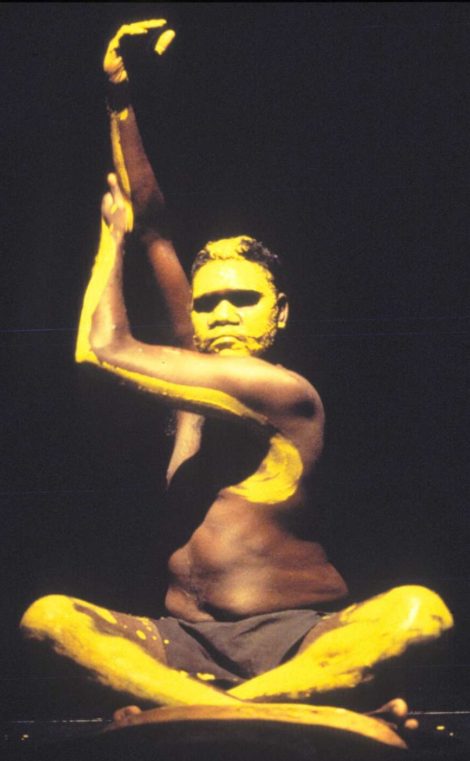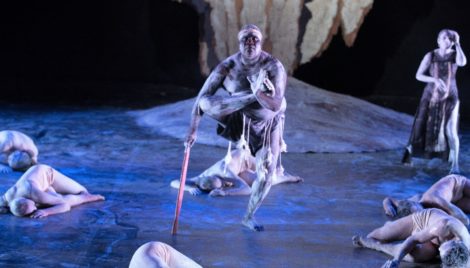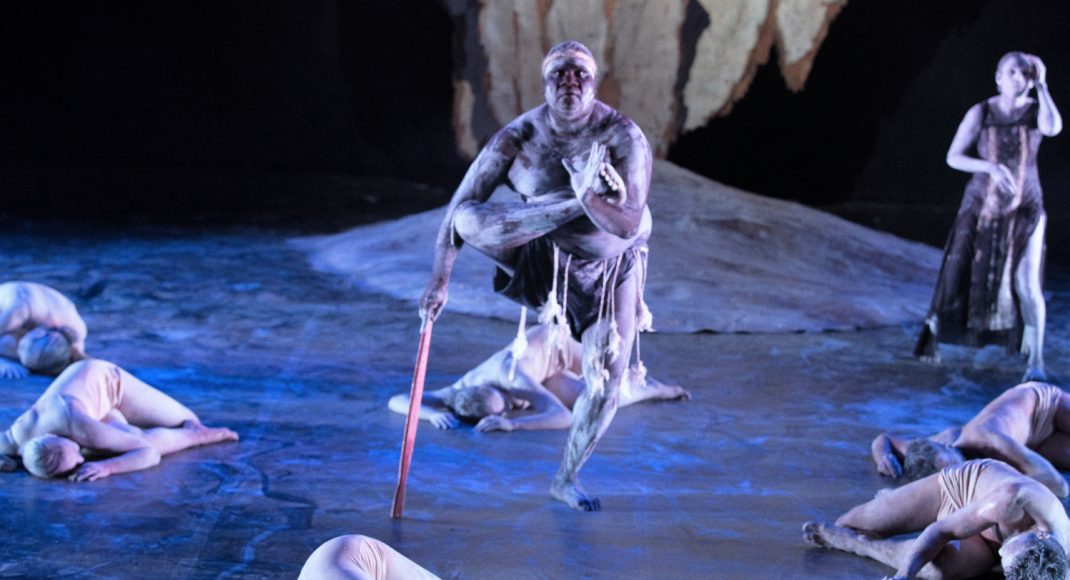In late September and early October Bangarra Dance Theatre will be performing in New York and Paris. In New York the company will be part of Fall for Dance, a wonderful initiative that has been held in October, when the leaves of the city’s deciduous trees are falling to the ground, for about 10 years now. All seats are just $15 and the program features dancers and dance companies from America and around the world. Bangarra will present Spirit, a selection from some of the company’s best-known works. That selection will include Djakapurra Munyarryun’s Ngurrtja—land cleansing song, which opened the 2015 reworking of the 1995 production, Ochres.
In Paris Bangarra will give five performances of the new Ochres at the Musée du quai Branly—Jacques Chirac, a museum devoted to ethnographic material from around the world. The company has a one week residency at the museum and the residency will include, in addition to Ochres, workshops, public talks and screenings of Stephen Page’s film Spear.
The role that Djakapurra Munyarryun will play in Ochres on this tour is not quite the same as his role in the original production, when in the opening moments he was seen smearing his body with yellow ochre. It was an unforgettable theatrical moment.

National Library of Australia
The recollection of that opening sent me hunting for a Canberra Times article I wrote in 1998 as a preview to Bangarra’s season of Fish. As the story was published in print form only, that is some years before The Canberra Times was available online, I am republishing it here (in a slightly refined form) for the background it gives to the work of Djakapurra Munyarryun.
‘Cultural designer steeped in tradition.’
Michelle Potter
When Bangarra Dance Theatre’s production of Fish opens next week at the brand new Playhouse, Canberra Theatre Centre, one performer is sure to stand out: Djakapurra Munyarryun. He has that elusive quality—stage presence. So strong is the sense of wisdom and authority that pervades his activities onstage it’s hard to believe he’s only 23. Artistic director of Bangarra and choreographer of Fish, Stephen Page, says, “It’s not surprising really. He’s part of the Dreaming.”
Munyarryun, steeped in the traditional dances and ceremonies of the Yirrkala community in north-eastern Arnhem Land, is Bangarra’s cultural consultant. For Fish he has also been designated “cultural designer” and takes his place alongside the other members of the creative team. Munyarryun’s contribution to the work of Bangarra is critical. It helps it achieve what is most distinctive about it: the fusion of traditional stories and music with the experiences of urban Aboriginal and Islander people.
“When he works with the company there is a constant sharing of ideas,” Page says. He is inspirational. Djakapurra helps build layers of Aboriginality in the company.”
Such layers are apparent in the thematic material in Fish. The works takes us on a journey to three watery worlds and celebrates the wealth of life and mystery they contain. Swamps is redolent of the sacredness and spirituality of traditional lifestyles; Traps juxtaposes contemporary Western and old Aboriginal ways; Reef, full of colour and light, is celebratory and refers especially to the dance styles of Torres Strait Islander communities.
For two, at least, of the Page brothers—choreographer/director Stephen, and musician David, who composed the score for Fish—the relationship with Munyarryun continues beyond the dance studio. The three enjoy a special relationship that allows them to explore the links between traditional and urban ways in a diversity of situations. Not only have they been adopted into each other’s families, but they also spend time in Yirrkala together often going out to catch stingrays. Stephen Page says:
“Of course the urban situation, where many of our stories were forbidden, was frustrating for Djakapurra at first. He had to learn a hard lesson about urban Aboriginal history. But he was always interested in the crossover of traditional and contemporary styles in both music and dance, and just kept returning to storytelling to rekindle the spirit. Now he is comfortable in both traditional and urban situations. This is the kind of fusion that is built into the infrastructure of Bangarra.”
Munyarryun has been with Bangarra since 1991, featuring in all its major productions including Praying Mantis Dreaming, Ninni, Ochres and, most recently Rites, the popular collaboration between Bangarra and the Australian Ballet staged for the Melbourne Festival last year.
As well as being a dynamic dancer, Munyarryun is a virtuoso didgeridoo player and in Fish, as well as dancing, he features as a musician on the soundtrack playing bilma and yirrdaki (clap sticks and didgeridoo). His versatility as a performer has also brought him roles in films, including Black River and Breaking Through, as well as work with the band Yothu Yindi.
Fish, now touring Australia as part of the 1998 Made to Move season, premiered at the Edinburgh International Festival last year before returning for a Sydney season in the Festival of the Dreaming, the first of the cultural festivals leading to the Sydney 2000 Olympic Games.
As well as highlighting the Bangarra approach to fusion, Fish has an extraordinary visual impact. Its evocative set is by Peter England; costumes are by Jennifer Irwin, who explores the qualities of texture and sheen; and lighting is by Mark Howett.
Djakapurra Munyarryun is the tall dancer, with presence and authority, who will probably come out after the show in jeans, a T-shirt and a baseball cap.
First published in The Canberra Times—Panorama, 18 April 1998, p. 16.
Michelle Potter, 26 August 2016
Featured image: Djakapurra Munyarryun in a scene from Ochres, 2015. Photo: © Jhuny-Boy Borja


One thought on “Djakapurra Munyarryun. Bangarra Dance Theatre”